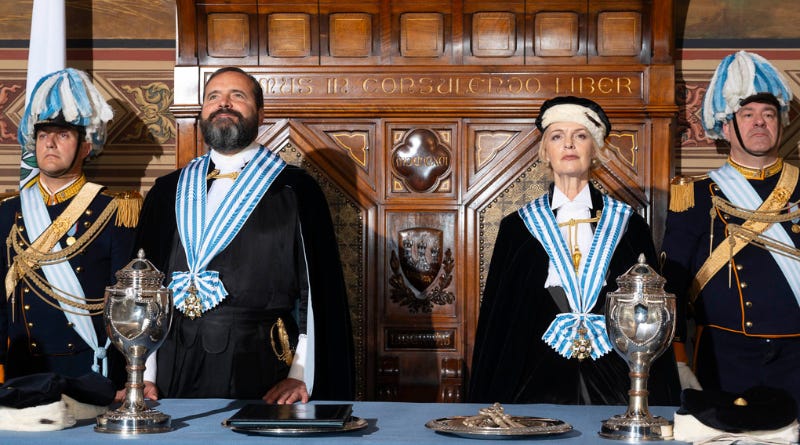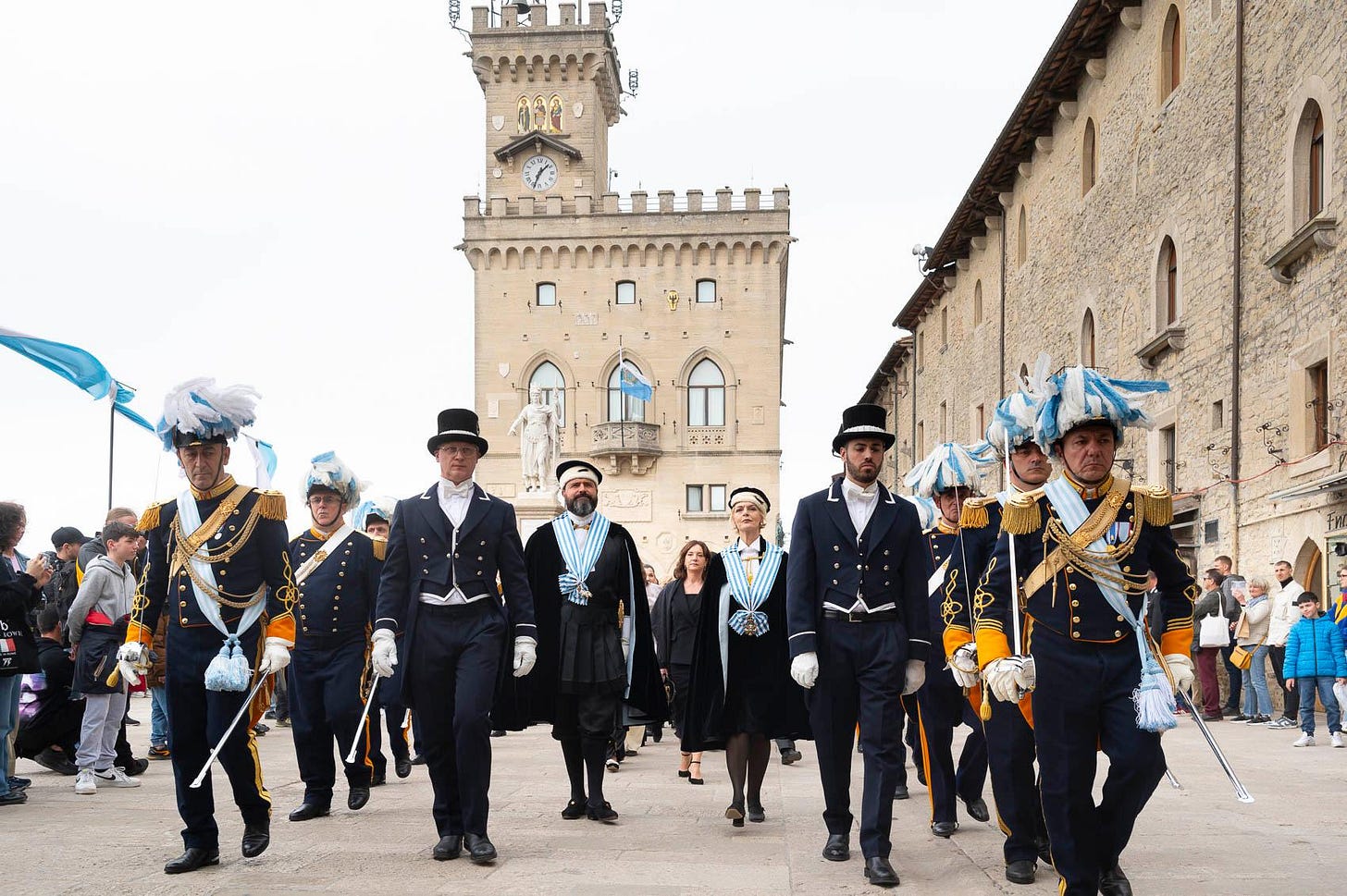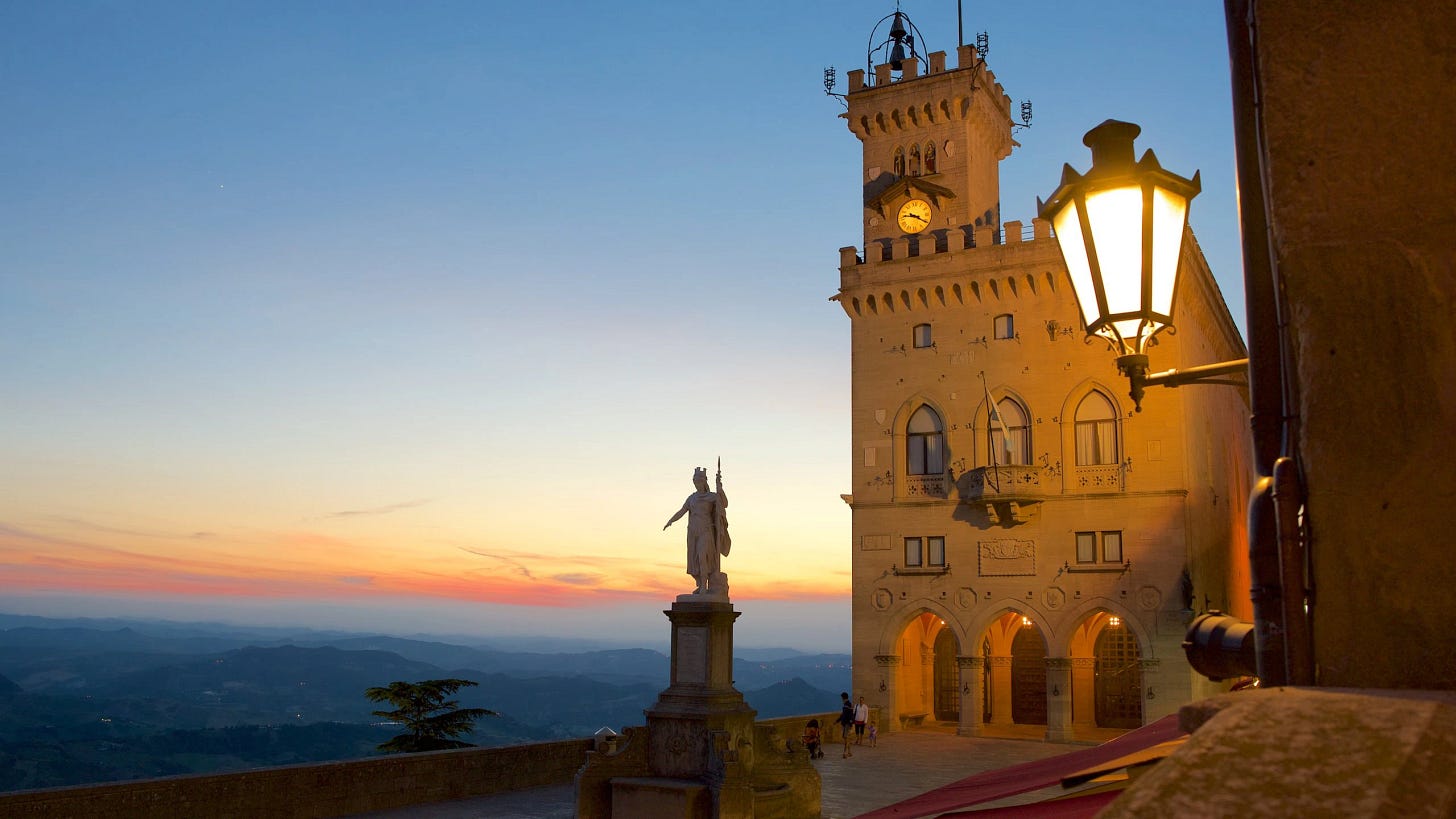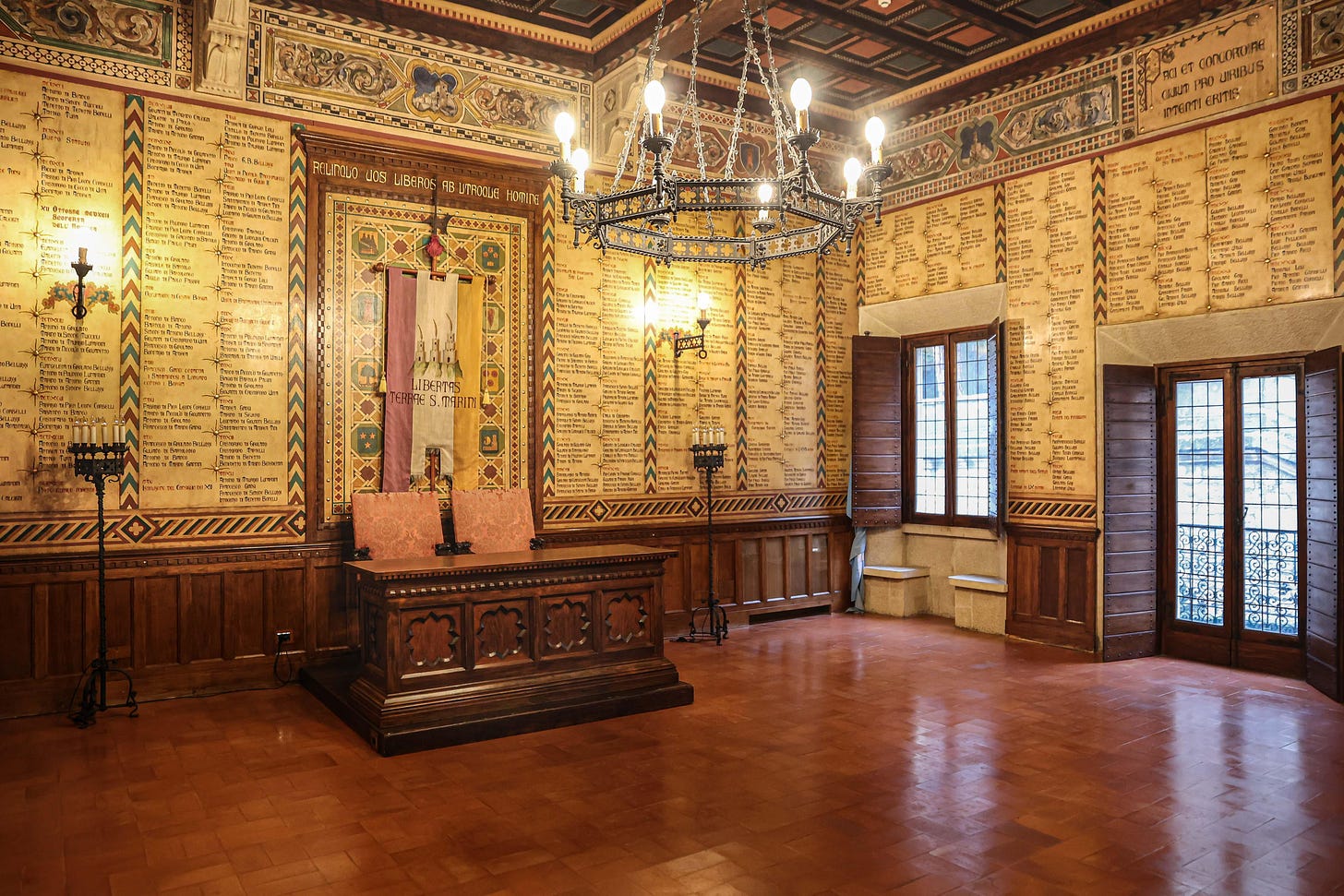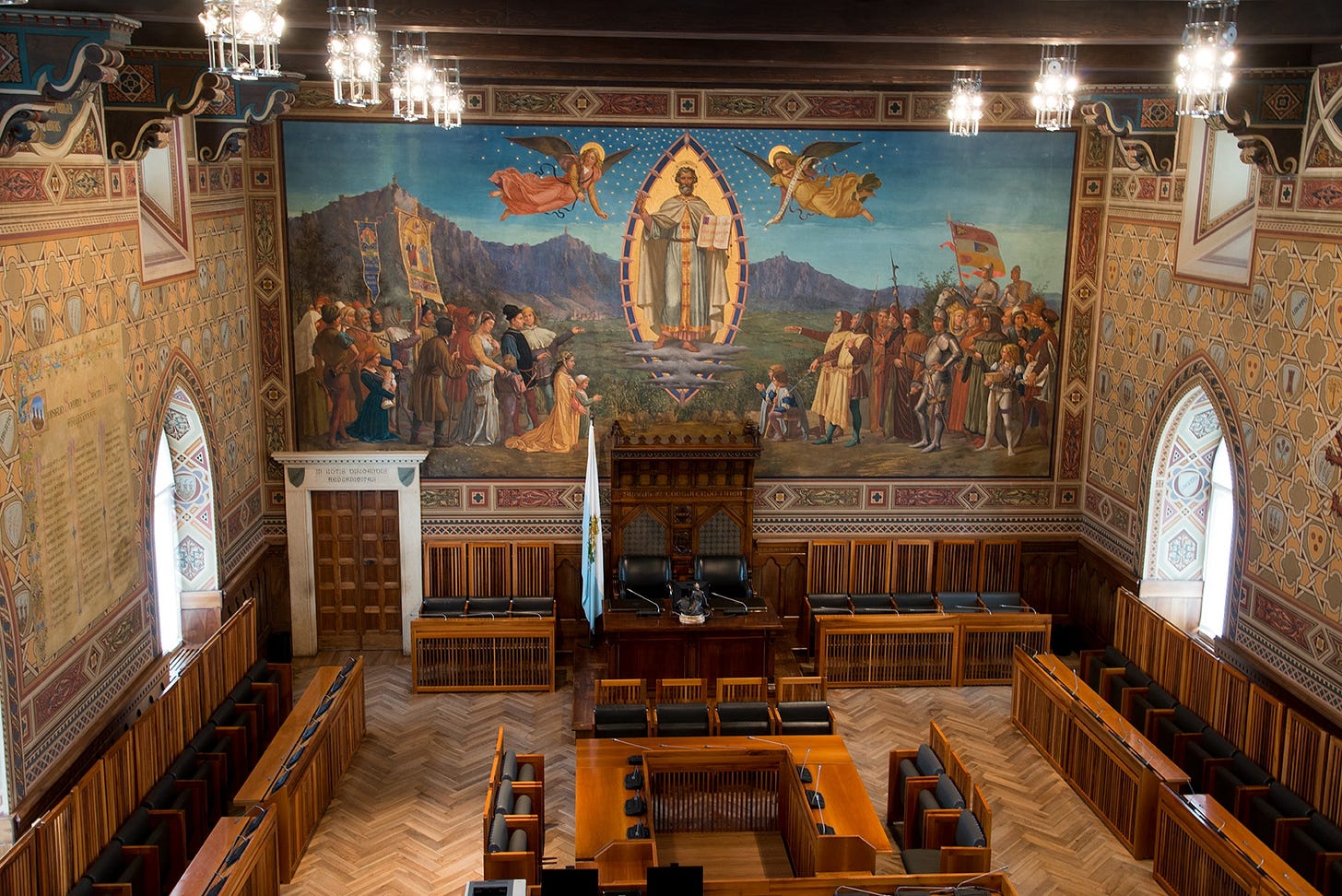Does San Marino Have a President?
Here’s how the world’s Oldest Republic actually works.
Hello to all you history aficionados, geography nerds and politics lovers.
Let’s settle this once and for all.
I recently noticed that one of the most searched queries about San Marino is something along the lines of:
“Does San Marino have a President?”
And I get it.
Even in person, this is easily one of the top three questions I hear from curious visitors and friends.
(Alongside: “Does San Marino have its own money?”)
So it’s high time we talk about the political system of San Marino!
Spoiler: we don’t have a President. We have two Captains Regent.
Yes… two!
They are called Capitani Reggenti in Italian, and they are the joint Heads of State of San Marino. Their role is mostly symbolic and representative, a bit like a monarch in a constitutional monarchy; think of the King or Queen in the UK, but elected, temporary, and always in pairs.
And here’s the other fun twist:
They only stay in office for six months.
That means San Marino technically has four different Heads of State per year.
So yes: if you manage to get elected to parliament, there’s a good chance you could end up as Captain Regent at least once in your life. Everyone gets a turn (eventually).
The Captains Regent are elected every year on April 1st and October 1st by the San Marino Parliament (known as the Consiglio Grande e Generale). Both of these days are also an official national holiday.
Their main tasks include representing the Republic at home and abroad, ensuring the constitutional order, and - yes - performing official ceremonies.
But don’t expect them to write policy or run the economy.
So who holds executive power then?
That job belongs to a small group of ministers, known as the Congress of State (Congresso di Stato). This is basically San Marino’s cabinet.
At the head of it all are a handful of Secretaries of State, including:
the Secretary for Foreign Affairs (often considered the de facto Prime Minister)
the Secretary for Internal Affairs
the Secretary for Finance
...and so on.
They handle day-to-day governance and public policy.
What about Parliament?
San Marino’s Parliament is called the Grand and General Council (Consiglio Grande e Generale), and it’s made up of 60 members, elected by popular vote every five years.
This council:
makes laws
elects the Captains Regent
approves the state budget
and appoints the Congress of State
It’s the central institution of our democracy and has existed - in some form - since medieval times!
The Council meets inside the Palazzo Pubblico, the official government building in the City of San Marino (and a rather photogenic one at that).
A little history: where do the Captains Regent come from?
The tradition of electing two Captains Regent dates back to the year 1243 (yes, that’s not a typo).
San Marino was inspired by the ancient Roman idea of having two consuls to prevent absolute power from concentrating in a single hand.
From the beginning, this idea of balanced power wasn’t just about numbers; it was also about social class.
Historically, one Captain Regent would be chosen from the upper noble class, and the other from the people: a merchant, farmer, artisan, or someone outside the old patrician families.
The idea was to represent both the ruling elite and the broader population - centuries before this became standard practice in modern democracies.
This deep-rooted system of dual power is still in place today.
Every six months, two individuals from different political backgrounds are chosen to serve; always together, always temporary.
To this day, that principle remains: no ruler for too long, and never alone.
So… no President. But a system that works (albeit slowly).
San Marino may be tiny, but it’s serious about its democratic heritage.
We don’t have a president.
We have two rotating heads of state, a parliament that traces its roots back centuries, and a system built on the idea that power should be shared, balanced, and never permanent.
It may not be the most streamlined or fast-moving setup for the modern age… but it works.
And it’s lasted longer than pretty much any other.
That’s how things work in the world’s Oldest Republic.



